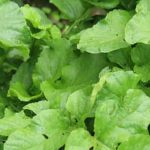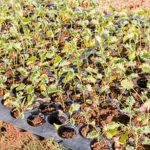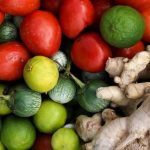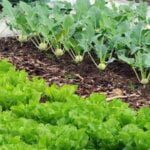Are you looking to start your own vegetable garden in the Pacific Northwest? Whether you’re a seasoned gardener or a beginner, cultivating a successful vegetable garden in this region comes with its own unique set of challenges and rewards. In this article, we will explore the ins and outs of Pacific Northwest vegetable gardening, from the best vegetables to grow to dealing with common pests and diseases, as well as tips for starting and preserving your garden.
The Pacific Northwest is known for its mild, maritime climate, which makes it an ideal location for growing a wide variety of vegetables. From crispy greens to juicy tomatoes, the region offers ample opportunities for homegrown produce. Understanding the specific conditions and requirements of this area can help you create a thriving garden that will provide you with fresh, healthy vegetables throughout the growing season.
In this article, we will delve into the best vegetables to grow in the Pacific Northwest, discussing their suitability for the climate and soil conditions of the region. We will also explore the ideal growing conditions in the Pacific Northwest, providing insights into how to make the most of the unique climate and soil attributes.
Additionally, we will offer tips for starting a vegetable garden in this area, as well as guidance on seasonal care and maintenance. So whether you’re new to Pacific Northwest vegetable gardening or looking to expand your knowledge, read on for essential information and resources to help you succeed in your gardening endeavors.
Best Vegetables to Grow in the Pacific Northwest
When it comes to Pacific Northwest vegetable gardening, there are certain vegetables that thrive in the unique climate and conditions of this region. Whether you are a seasoned gardener or just starting out, choosing the right vegetables to grow is crucial for a successful harvest. Here are some of the best vegetables to consider for your Pacific Northwest garden:
- Tomatoes: Despite the cooler temperatures of the Pacific Northwest, many varieties of tomatoes can still be successfully grown in this region. Look for early ripening and cold-tolerant varieties such as ‘Oregon Spring’ or ‘Sub-Arctic Plenty’.
- Kale: This cold-hardy green thrives in the Pacific Northwest’s mild climate. Varieties like ‘Lacinato’ or ‘Winterbor’ are excellent choices for a continuous harvest throughout the growing season.
- Broccoli: Another cold-tolerant vegetable, broccoli does well in the Pacific Northwest. Consider planting varieties like ‘Arcadia’ or ‘Green Goliath’ for a bountiful harvest.
In addition to these vegetables, other excellent choices for Pacific Northwest gardens include carrots, beets, lettuce, and peas. These vegetables not only tolerate the region’s cool and wet weather but also benefit from its long growing season.
Remember to choose vegetable varieties that are best suited to your specific microclimate within the Pacific Northwest, whether you live near the coast or in the inland valleys. By selecting the right vegetables for your area and paying attention to their individual growing requirements, you can set yourself up for a successful vegetable gardening experience in the Pacific Northwest.
Ideal Growing Conditions in the Pacific Northwest
The Pacific Northwest is known for its mild, maritime climate and rich, fertile soil, making it an ideal region for vegetable gardening. When it comes to growing vegetables in the Pacific Northwest, certain conditions need to be taken into consideration to ensure a successful harvest.
Ideal Growing Conditions
- Mild Temperatures: The Pacific Northwest experiences relatively mild temperatures throughout the year, with cool, wet winters and warm, dry summers. This makes it suitable for a wide variety of vegetables that thrive in these conditions.
- Rich Soil: The soil in the Pacific Northwest is known for its fertility, which provides essential nutrients for plant growth. It’s important to amend the soil with organic matter such as compost or aged manure to maintain its fertility and structure.
- Ample Moisture: The frequent rainfall in the Pacific Northwest provides natural irrigation for vegetable gardens. However, some vegetables may require additional watering during drier periods, so it’s crucial to monitor moisture levels in the soil.
In addition to these ideal growing conditions, it’s important to consider the specific needs of different vegetables when planning a garden in the Pacific Northwest. Some vegetables may require more sunlight or protection from strong winds, while others may prefer slightly acidic soil. By understanding these factors and selecting appropriate varieties, gardeners can maximize their success in cultivating a flourishing vegetable garden in this region.
Ultimately, with the right combination of ideal growing conditions and careful planning and care, vegetable gardening in the Pacific Northwest can yield bountiful and nutritious harvests for both novice and experienced gardeners alike. Whether planting leafy greens like kale and spinach or robust crops such as tomatoes and peppers, the Pacific Northwest offers abundant opportunities for a diverse and thriving vegetable garden.
Tips for Starting a Vegetable Garden in the Pacific Northwest
When starting a vegetable garden in the Pacific Northwest, it’s essential to consider the unique climate and growing conditions of the region. The cool, wet weather can pose both challenges and opportunities for gardening enthusiasts. Here are some tips to help you successfully start your own vegetable garden in the Pacific Northwest.
Choose the Right Location
The first step in starting a vegetable garden in the Pacific Northwest is selecting the right location. Look for a spot that receives ample sunlight, as most vegetables require at least 6-8 hours of direct sunlight per day. Additionally, consider proximity to water sources and protection from strong winds. Raised beds or container gardens can also be good options for areas with poor soil drainage.
Select Suitable Varieties
In the Pacific Northwest, choosing vegetable varieties that are well-suited to the cooler, damp climate is crucial for success. Opt for cold-hardy vegetables such as kale, broccoli, lettuce, peas, and carrots, which thrive in these conditions. It’s also important to select disease-resistant varieties to combat common issues related to humidity and moisture.
Soil Preparation
Before planting, take the time to prepare your soil. The Pacific Northwest soil can be acidic and lacking in nutrients, so consider testing your soil’s pH and amending it with organic matter such as compost or well-rotted manure. This will help improve drainage and fertility, providing an optimal environment for your vegetables to grow.
By following these tips for starting a vegetable garden in the Pacific Northwest, you can set yourself up for a successful growing season filled with an abundance of fresh produce. With careful planning and attention to detail, you’ll soon be enjoying a bountiful harvest from your own backyard garden.
Dealing With Common Pests and Diseases in the Pacific Northwest
Identifying Common Pests and Diseases
One of the biggest challenges for vegetable gardeners in the Pacific Northwest is dealing with pests and diseases that thrive in the region’s cool, damp climate. Some common pests to watch out for include aphids, slugs, snails, and cabbage loopers.
Additionally, diseases such as powdery mildew, blight, and root rot can pose a threat to your vegetable garden. It is important to familiarize yourself with the signs of these pests and diseases so you can take prompt action to address them.
Natural Pest and Disease Control Methods
When it comes to managing pests and diseases in your Pacific Northwest vegetable garden, it is important to prioritize natural and sustainable methods. For example, attracting beneficial insects like ladybugs and lacewings can help keep aphid populations in check. Additionally, using physical barriers such as copper tape or diatomaceous earth can deter slugs and snails. When it comes to diseases, practicing crop rotation and keeping the garden clean from debris can help prevent common fungal infections.
Organic Solutions for Pest and Disease Management
For those who prefer organic solutions for pest and disease management in their Pacific Northwest vegetable garden, there are several options available. Neem oil can be effective against aphids and other soft-bodied insects, while Bacillus thuringiensis (Bt) is a natural bacterial pesticide that targets caterpillars like cabbage loopers.
Additionally, applying compost tea or liquid seaweed fertilizer can help boost plant health and resilience to fight off diseases. By incorporating these organic solutions into your gardening practices, you can maintain a healthy and thriving vegetable garden without relying on chemical pesticides or herbicides.
By being vigilant about monitoring your plants for signs of pests and diseases, adopting natural control methods, and utilizing organic solutions when needed, you can effectively manage common challenges in pacific northwest vegetable gardening.
Seasonal Care and Maintenance for Pacific Northwest Vegetable Gardens
When it comes to maintaining a vegetable garden in the Pacific Northwest, the key is to be mindful of the changing seasons and their impact on your plants. In the spring, it’s important to prepare your soil for planting by amending it with compost or other organic matter.
This will help ensure that your vegetables have the nutrients they need to thrive. Additionally, you’ll want to keep an eye on the weather and protect your tender plants from any unexpected late frosts.
As summer arrives, it’s essential to regularly water your vegetable garden, as the Pacific Northwest can experience dry spells during this time. Mulching around your plants can help retain moisture in the soil and prevent weeds from taking over. You’ll also want to keep an eye out for any signs of pests or diseases and take proactive measures to address them before they become a larger issue.
In the fall, as temperatures start to drop, you’ll need to start thinking about preparing your vegetable garden for winter. This may involve cleaning up any spent plants, adding mulch to protect your soil from erosion, and planting cover crops like winter rye or clover to improve soil fertility. By staying diligent throughout the changing seasons, you can ensure that your Pacific Northwest vegetable garden remains healthy and productive year-round.
| Spring | Summer | Fall |
|---|---|---|
| Prepare soil with compost | Regularly water plants | Clean up spent plants |
| Protect from late frosts | Mulch around plants | Add mulch for protection |
| Keep an eye on weather | Monitor for pests and diseases | Plant cover crops |
Harvesting and Preserving Your Pacific Northwest Vegetable Garden
After months of hard work and patience, it is finally time to harvest the fruits of your labor in your Pacific Northwest vegetable garden. The region’s cool, wet climate offers plenty of opportunities to grow a variety of vegetables, from leafy greens to root crops and everything in between. As you start to gather your bountiful harvest, it’s important to have a plan for preserving your produce to enjoy throughout the year.
One of the best ways to preserve your Pacific Northwest vegetable garden harvest is by freezing or canning. Many vegetables, such as peas, green beans, and corn, can be blanched and then frozen for long-term storage. Others, like tomatoes and cucumbers, can be turned into delicious sauces or pickles and preserved through canning. By preserving your harvest, you can continue to enjoy the flavors of your garden even after the growing season has come to an end.
In addition to freezing and canning, consider drying some of your vegetables for preservation. Herbs, peppers, and certain types of fruits can all be dried to extend their shelf life. Properly dried produce can be stored in airtight containers for months, allowing you to savor the flavors of your Pacific Northwest vegetable garden well into the winter months. Experiment with different preservation methods to find what works best for each type of vegetable in your garden.
Community Resources and Events for Pacific Northwest Vegetable Gardeners
In conclusion, vegetable gardening in the Pacific Northwest offers a unique and rewarding experience for gardeners of all levels. With its mild climate and ample rainfall, the region provides an ideal environment for growing a wide variety of vegetables. From the vibrant community of fellow gardeners to the numerous events and resources available, there is no shortage of support and inspiration for those looking to start or enhance their Pacific Northwest vegetable gardens.
One of the most valuable resources for Pacific Northwest vegetable gardeners is the strong community network that exists in the region. Whether through local gardening clubs, online forums, or community gardens, gardeners have access to a wealth of knowledge and support from others who share their passion. Additionally, many cities and towns in the Pacific Northwest host gardening events, workshops, and classes throughout the year, providing opportunities for learning and connecting with other like-minded individuals.
For those looking to take their passion for Pacific Northwest vegetable gardening to the next level, there are also numerous volunteer opportunities and events that allow gardeners to give back to their communities while furthering their own skills and experiences. From teaching others about sustainable gardening practices to participating in local food security initiatives, there are countless ways for vegetable gardeners in the Pacific Northwest to make a positive impact through their love of gardening.
Overall, the region’s strong sense of community and shared dedication to sustainable living make it an ideal place for anyone interested in delving into or expanding their knowledge of vegetable gardening.
Frequently Asked Questions
What Vegetables Are Easy to Grow in the Pacific Northwest?
In the Pacific Northwest, some of the vegetables that are easy to grow include tomatoes, lettuce, kale, carrots, and radishes. The mild and moist climate in the region is ideal for these crops to thrive.
When Should I Start My Garden in PNW?
In the Pacific Northwest, it is best to start your garden in late winter or early spring, typically around March or April. This timing allows for cooler weather crops to be established before the warmer months arrive.
What Veggies Grow Best in Seattle?
Seattle’s climate is conducive to growing a variety of vegetables including broccoli, peas, beans, potatoes, and Brussels sprouts. These cool-weather crops tend to do well in the mild temperatures and ample rainfall typical of the city.

If you’re looking to get into vegetable gardening, or are just looking for some tips on how to make your current garden better, then you’ve come to the right place! My name is Ethel and I have been gardening for years. In this blog, I’m going to share with you some of my best tips on how to create a successful vegetable garden.





